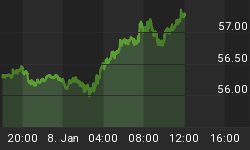4:30 am Minutes of April Bank of England Meeting (exp 8-1, prev 9-0) 8:30 am CAN Mar Leading Indicators (exp 0.3%, prev 0.2%) 8:30 am US Mar CPI (exp 0.1%, prev 0.1%) 8:30 am US Mar CPI ex food & energy (exp 0.2%, prev 0.1%)
Dollar licks its wounds after the FOMC-driven damage boosted the EUR/USD past a new year high of $1.2367, and the yen towards the top of its 3-week range at 116.74. Aside from the dovish minutes of the March 20 FOMC meeting (more below), the weaker than expected US data on March housing starts and building permits solidified the theme of the housing sector, an essential consideration in the Federal Reserve's thinking.
This morning's March CPI figures could instill fresh dollar selling in the event that the core CPI shows a reading of no greater than 0.2%, in which case would translate to an annual core rate of 1.9%-2.0%, lower than the y/y monthly average of 2.2%, registered over the last 14 months. Such a scenario would be interpreted as evidence that inflationary pressures have acquiesced, giving the Fed more reasons to consider pausing its tightening campaign at 5.00%.
Cautious FOMC urges markets to watch data
The FOMC minutes of the March 20 meeting were dovish and dollar negative, bolstering speculation that the Fed will raise rates in May and not in June at which time it would pause, or end the tightening cycle as needed. The most explicit signs from the minutes suggesting the last rate hike would come in May is seen through the remark that noted: "Several members were concerned that market participants might not fully appreciate the extent to which future policy action will depend on incoming economic data", and that the phrase in the FOMC statement indicating: "some further policy firming may be needed to keep the risks...roughly in balance" could be misconstrued as suggesting that the Committee thought that several further tightening steps were likely to be necessary."
Therefore, not only some FOMC members may have grown overly cautious about the risk of overtightening, but also preoccupied by the fact that market expectations may not be heeding the FOMC's data-watch stance and are too zealous in pricing probabilities for further interest rate hikes in the future. While we side with the market's expectations for one more rate hike, we do not rule out the Committee from altering the statement in May by dropping the phrase stating that: "...some further policy firming may be needed...".
Momentum in the US dollar index continues to deteriorate hitting a fresh 4 month low of 88.19, nearing the key 88.02 support -- 38% retracement of the 89.48-92.68 rise. With the Fed being suspected to be done next month, JGBs hitting 2.00% for the first time in 7 years and the Eurozone data continuing on a strong note could call up the 87 figure well before month end -- especially if China decided to revalue its currency.
A high level meeting of top diplomats in Moscow yesterday regarding how to deal with Iran went nowhere as China and Russia continue to oppose any suggestion by the US and UK to impose sanctions on Iran. We reiterate our expectations that the Iran's refusal to comply with UN inspectors will continue into the summer especially that China and Russia, the permanent UN Security members have the veto to reject any use of force of sanctions. This is likely to trigger further price escalation in oil and gold, as we see $635 per ounce and $75 per barrel by end of the month.
EURUSD nears 200 week average
The euro's near 1 cent gain to 7 month highs of $1.2367 signals a significant change in the FX tenor for the first half of the year benefiting from a new chapter in the weak dollar sentiment story. Momentum indicators suggest that 1.24 will be the next resistance target as it stands just above the 200 week average and the 38% retracement of the decline from the all time high of $1.36 to last year's low of $1.1639. Support has climbed convincingly to 1.2268, followed by key foundation at 1.220.

USDJPY eyes 116.50
Yen steadies as Japan's index of leading economic indicators gets revised in to 90.9 in February from the preliminary reading of 80.0, while the coincident index was revised down to 50.0 from an initial reading of 55.6.
Japanese politicians begin to fret about the rise in bond yields, expressing preoccupation that the rapid rise in market rates would crimp the recovery. Tuesday's rise in 10-year yields to a 7 year high of 2.00% also prompted some nervousness that the government's interest payments on public debt would be driven up higher. 9 of 16 economists in a Bloomberg poll this month said the Bank of Japan will raise rates as early as July.
Although core CPI was positive for the last 4 straight months, there remain signs of deflation as measured by the GDP deflator, which fell 1.6% in Q4. But it's worth noting that the last 3 of those positive CPI months
Momentum indicators as measured by the MACD histogram show the first bearish cross-over since March 22, which clears the way for the 116.50 target. Yet we caution against expectations of further aggressive yen in light of possible jawboning from Japanese officials, taking the form of either targeting the currency or the timeliness of monetary policy tightening. We see key support standing at 116.30. Upside initially capped at around the 100 day MA of 117.35-40, followed by 117.75-80.

















